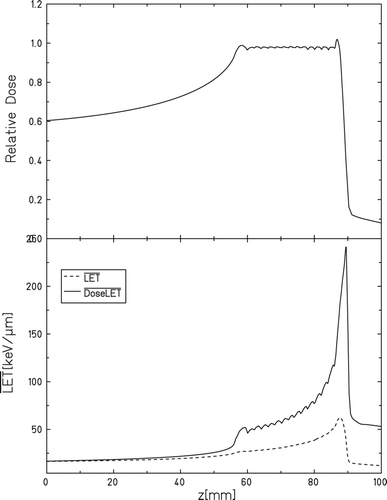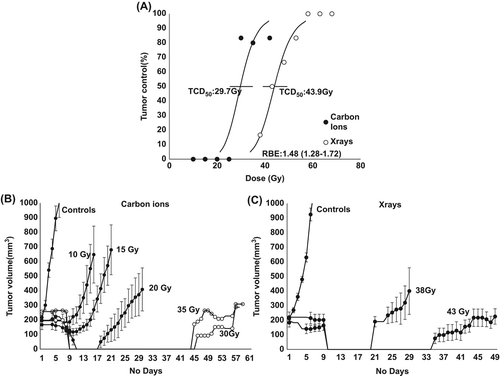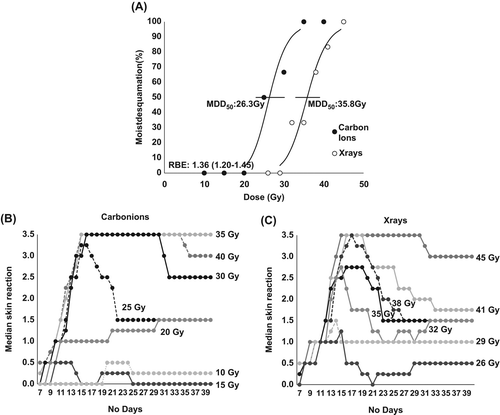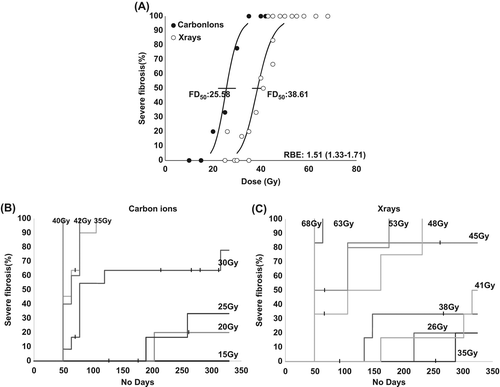Figures & data

Figure 2. Tumor control. Effect of carbon ion irradiation on the radiation response of a C3H mouse mammary carcinoma. A: Tumor response was assessed by the percentage of mice showing local tumor control 90 days after treatment. The points represent results from an average of 5 or 6 mice per group and the errors (bars) show 95% confidence intervals on the TCD50 values, p < 0.0005. B: Tumor growth time of carbon ion irradiated tumors. For controls and 10–20 Gy (●) the results show means from an average of 5–9 mice per group. The curves are terminated when the first animals in the group had to be euthanized. Errors bars represents standard error (n = 5–9). For 30 Gy and 35 Gy (○) data from single tumors without local control is shown. Selected doses are shown for clarity. C: Tumor growth time of photon irradiated tumors. Results show means from an average of 5–9 mice per group. The curves are terminated when the first animals in the group had to be euthanized. Errors-bars represents standard error (n = 5–9).



